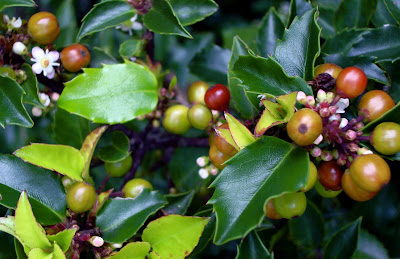These glass vases hold white ("L’Innocence") and deep pink ("Jan Bos") hyacinth bulbs. The bulbs must chill for about ten weeks at 40-50 degrees suspended over--but not touching--water. They'll be brought out of the refrigerator after January 1, to welcome the new year.

A crisper drawer holds amaryllis bulbs, bagged for convenience--my first attempt at rolling these bulbs over for another season. Three plants came to me in bloom last holiday season. After the blossoms dropped, I watered and fertilized the plants erratically until early fall. When their leaves turned limp and yellow, I cut off the foliage, removed the bulbs from their pots, picked away the dirt from the roots, and stuck each in its own labeled bag.

They need to chill for about eight weeks, so re-potting will not begin until after January 11. I also ordered a new deep red amaryllis ("Royal Velvet") for this year, just in case. Trust issues, I guess.

The refrigerator's butter shelf contains larkspur and mallow seeds (thanks, Bestitched!) from summer collection. I celebrated Thanksgiving by direct-sowing about half of the larkspur seeds. I guess that's what I'm serving this holiday!















